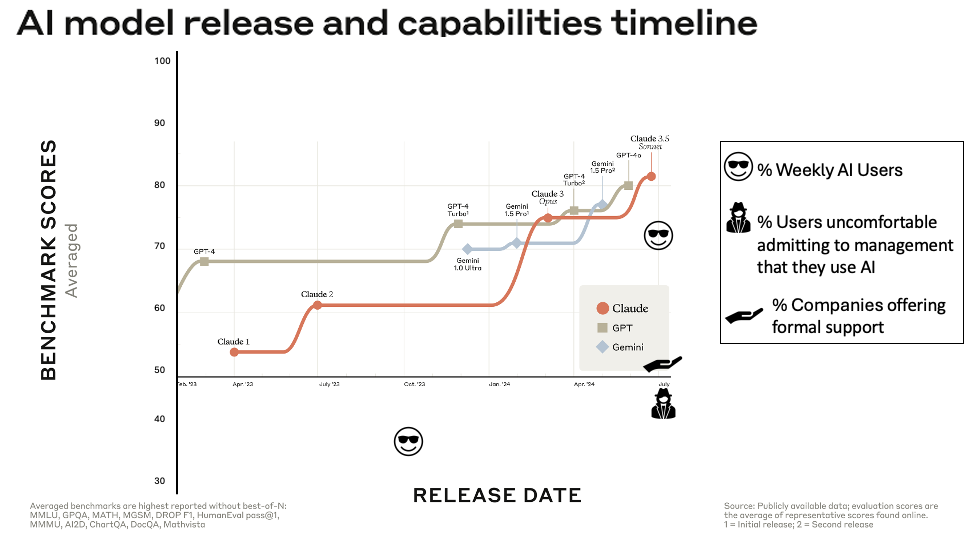AI in Job Applications: Using Your Own Judgment
/You’ve honed your AI skills. You may even subscribe to multiple AI platforms to access the best version of whichever generative AI is hot today. You’ve used AI to train for your career and figure out which industry will give you the best opportunity for growth. Now it’s time to apply for jobs. Do you go cold turkey and ghost your AI?
Making Rules on the Fly
No one says using AI to find job openings is a bad idea. However, plenty of jobs require you to certify that you haven’t used generative AI to produce the application. Today’s job application process is an ethical tug-of-war with real-world consequences.
Is the organization hiring you or you and your tools? Chefs bring their own knives to work. Do you show up with your tools or leave your trained AI at the door?
Do the expectations change across spellcheck, text auto-complete, Grammarly offering you a sentence with greater “clarity,” ChatGPT outlining, editing, crafting the complete document, or leveraging a purpose-built AI-job application platform that submits applications on your behalf? (Hint: Blanketing your field with applications may not be the best idea.)
Ironically, Anthropic, the company behind the Claude AI, includes this instruction in its job applications:
“While we encourage people to use AI systems during their role to help them work faster and more effectively, please do not use AI assistants during the application process. We want to understand your personal interest in Anthropic without mediation through an AI system, and we also want to evaluate your non-AI-assisted communication skills.”
No Easy Answers
Our research suggests many people think about AI (and other technology tools) as a silver bullet or a poison pill: a unidimensional perspective that a particular technology (like AI) is good or bad. However, leveraging AI in your job application (or at work) is likely not a yes/no situation.
Many organizations have complex and shifting preferences about AI use. Using generative AI instead of traditional email templates may be a yes, while image-creator AI may be a no. However, if the organization’s broader platforms (like Microsoft 365) have embedded AI, the organization may encourage art generation through that platform. What’s policy today is likely not the policy of tomorrow -- compare this to the work-from-home/return-to-work merry-go-round.
Nuance, Not How-Tos
There are no unidimensional answers about whether or how to apply AI in the job application process. Instead, the outcome results from a particular combination of “5Ts.” Consider your talent (e.g., skills), technology (e.g., AI strengths and weaknesses), and technique (e.g., the prompts you use and the rules stated in the job application). The quality of the combination comes from how well you align the mix with your target (goal) and your times (context).
Your target is to land the job that best suits your interests, skills, and preferences. We live in a time of wide-ranging and rapidly changing tools and expectations about AI use. Take stock of your talent, technology, and technique.
Talent
Has your work with AI given you the expertise to work without AI? Working with Grammarly has me on high alert for “passive voice” and unclear pronouns in my writing. That said, take care that you aren’t learning bad habits from biased AI or giving AI outputs more credence than deserved. Use AI to augment your learning, not avoid it.
Technology
Did you train your AI on your own work (I have a chatbot I trained on my academic publications that helps me edit new work), or did you leverage an AI trained on other people’s skills? Do you know the particular risks and benefits of the AI you use?
Technique
Did the AI do the work or help you do the work? Grammarly’s new Authorship tool can help us track where information came from. However, the Grammarly tool may also be an escalation of organizational tracking.
Are you ready to describe how you used technology to create your work sample or application? Does your perception of authorship match the reality of how you used the AI?
Challenge or Opportunity
Set aside the ridiculous, though possible, spiral where an AI screens your AI-generated materials, you get the interview, then leverage an AI video filter to enhance your appearance (don’t we all?) and AI speech recognition to suggest possible answers as you interview with the organization’s AI avatar.
Instead, see your decisions about using AI in your application as preparation for your interview. Prepare to discuss the nuances of modern work design with the interviewer. Clarify how much discretion you will have with AI options and practices in your work. Talk about whether in-house and external training are available to maximize your human-in-the-loop opportunities. Be more than the best human or AI for the job.







